The First World War was a golden age of propaganda, if a morally questionable art form can have a golden age. The totality of the conflict convinced governments that they needed to mobilize their entire populations. Governments on both sides produced a flurry of posters that demonized their enemies, encouraged the purchase of war bonds, and made enlistment seem like every man’s patriotic duty.
Even if you weren’t a man of military age, or even a citizen, the government wanted you to do your part. If nothing else, you could conserve food for the war effort:
This poster is, as they say, a rich text. The Statue of Liberty holds the torch of freedom aloft under a red, white, and blue rainbow, welcoming Europeans in peasant garb to the golden shores of America. The U.S. Food Administration wanted to reach everyone, even immigrants who couldn’t speak English, so the poster was issued in Yiddish:
And Italian:
This sort of thing — and there was a lot of wartime propaganda aimed at new American immigrants — was a practical thing to do. After all, the percentage of Americans who were foreign-born (nearly 15%) was as high as it had ever been in American history. Without their support, the war effort would have been much weaker. The government was not about to turn its nose up at their assistance.
After World War I, immigration into the United States slowed. The foreign-born population dropped below 5% in the 1970s before ticking higher once again. Now, the percentage of foreign-born people in the country is again above 14%.
You may have noticed that the current administration has taken a rather unwelcoming attitude toward people who want to enter America, especially if they’re undocumented. The government is producing its own kind of anti-immigrant propaganda, issuing memes and videos to discourage people from entering the United States.
The messaging was very different a century ago. War propaganda wasn’t the only type of advertising aimed at immigrants in the late 19th and early 20th century. Parts of the United States competed with each other — and several other countries — to attract immigrants to their communities.
Even before the immigration boom of the late 1800s, there were attempts to attract immigrants from England to settle in the mountains of Virginia:
Western states, especially, competed for immigrants. They had lots of land and not many people, and land agents often directly tried to attract new people to the country. This 1870 ad from Missouri lists properties from farms to wooded areas to “wild prairie:”
Railroads, too, got in on the act. After all, the more immigrants who moved to Texas, the more passengers the Houston & Texas Central would have:
Railroads often advertised to specific demographics, as this pamphlet did. It contained detailed maps, information on the environment in Kansas, and mortgage terms:
Sometimes, the railroads would try to attract immigrants to a particular town, as in this 1880 ad:
The United States wasn’t the only country trying to attract immigration. Canada, with its even emptier western expanses, went all-out to advertise opportunities to potential immigrants. The Canadian government sent lecturers to Glasgow to extoll the glories of western Canada:
They sent others to England:
They targeted Hungarians:
Germans:
And Norwegians:
Manitoba recruited Dutch immigrants:
The Canadian government portrayed Canada as a land of opportunity. You’ll notice that they never show Canada in the winter, and they make eking a living out of the western Canadian prairie seem much easier than it really was:
Shipping companies got in on the act, too:
They even had a peppy slogan: the Last Best West:
Australia, too, worked hard to attract new residents. This poster, issued in 1928, is aimed at British migrants:
I greatly enjoy this poster, which tried to attract migrants from Europe after World War II:
While looking through the Australian advertisements, I ran across this songbook from 1910. It’s not an advertisement, exactly, but it says out loud what a lot of the advertisements I’ve shown you today tend to say under their breath.
The song’s lyrics start like this:
White Australia bold and free
Our national policy
We mean to face the conquest as a nation
Our northern territory no longer is to be
The open gate of coloured immigration
This continent of ours is now a white man’s land.
That about sums it up, doesn’t it? As the song indicates, racial discrimination in immigration was the policy of the Australian government, and would be until after World War II.
You’ll notice that none of these advertisements I’ve shown you were in Chinese, Hindi, or Swahili. These countries may have wanted to recruit new immigrants, but they didn’t want everybody; only some races were encouraged to apply.
And, of course, the “free” and “empty” lands that the United States, Canada, and Australia offered to enterprising immigrants had not always been empty. They’d been purged of their original inhabitants by a combination of dishonesty, disease, and war.
So there are two ways to look at these advertisements — on the one hand, they’re an open-armed approach to new immigrants that we haven’t seen much lately in our nationalist, isolationist age. On the other hand, they’re an indication that the arms of these nations weren’t open to everyone; they were, like a lot of advertising, a carefully controlled message that left as much unsaid as it communicated.
This newsletter is free to all, but I count on the kindness of readers to keep it going. If you enjoyed reading this week’s edition, there are three ways to support my work:
You can subscribe as a free or paying member:
You can share the newsletter with others:
You can “buy me a coffee” by sending me a one-time or recurring payment:
Thanks for reading, and I’ll see you again next week!




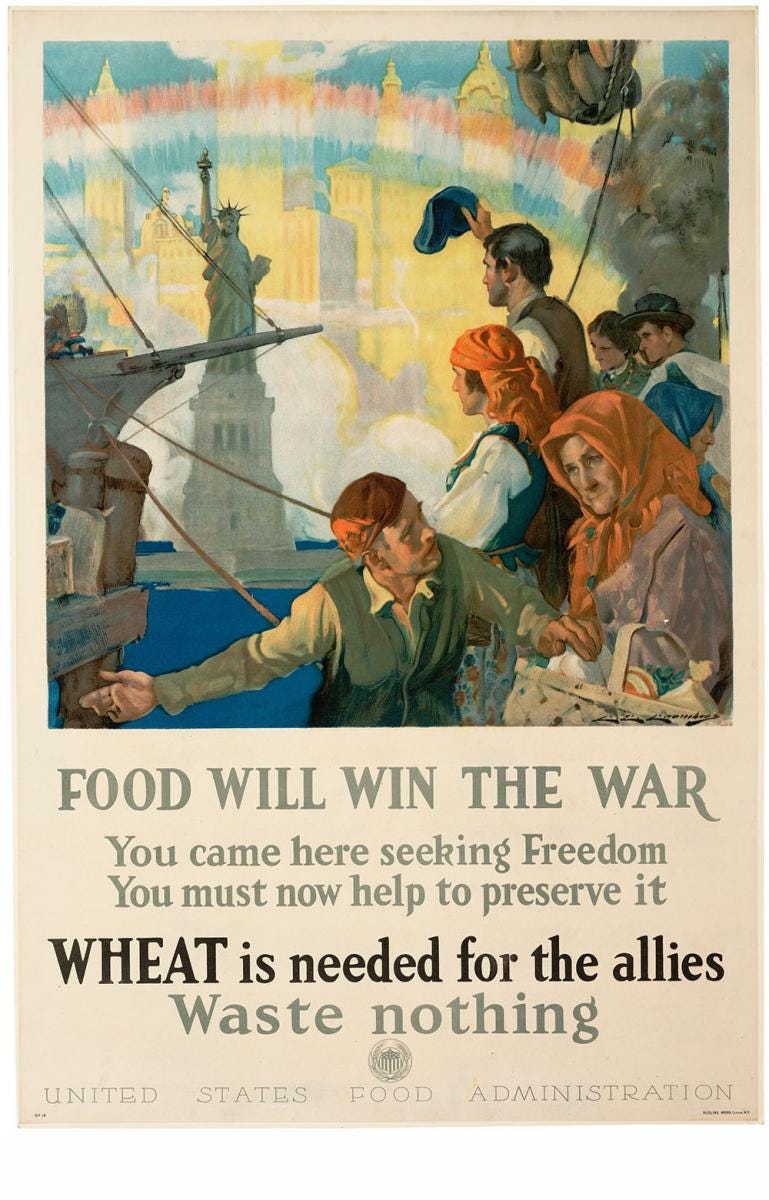
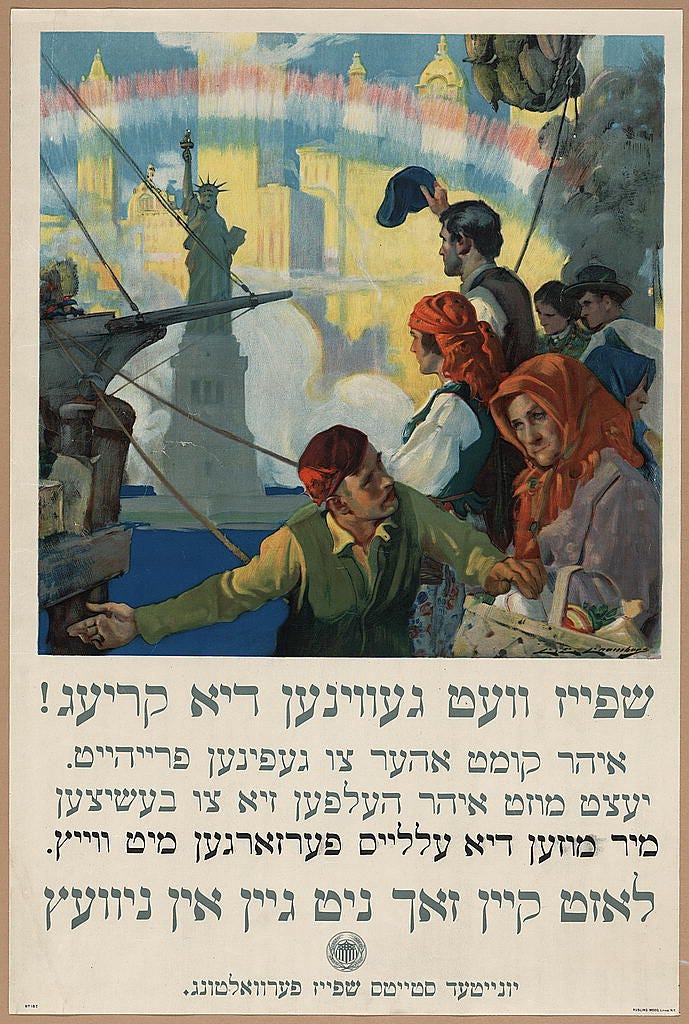
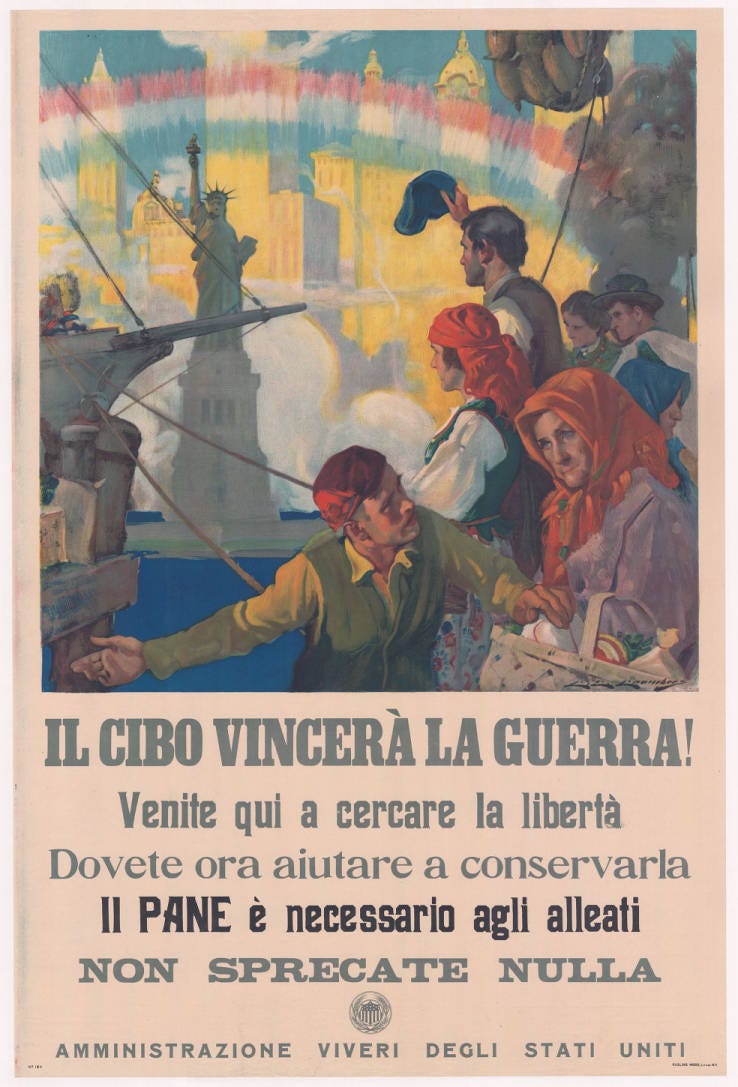


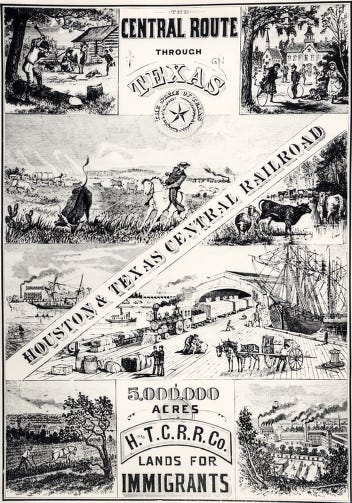


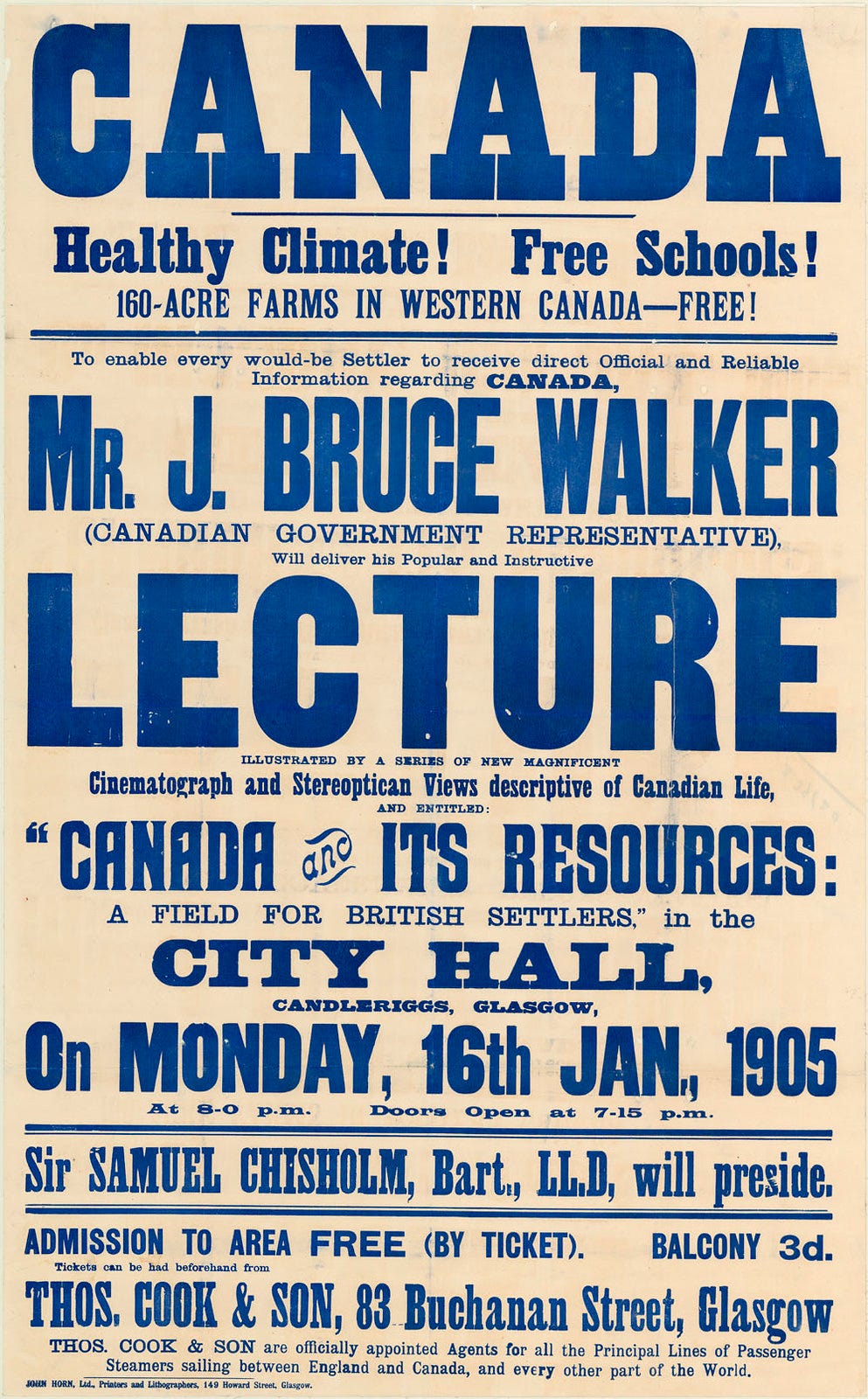
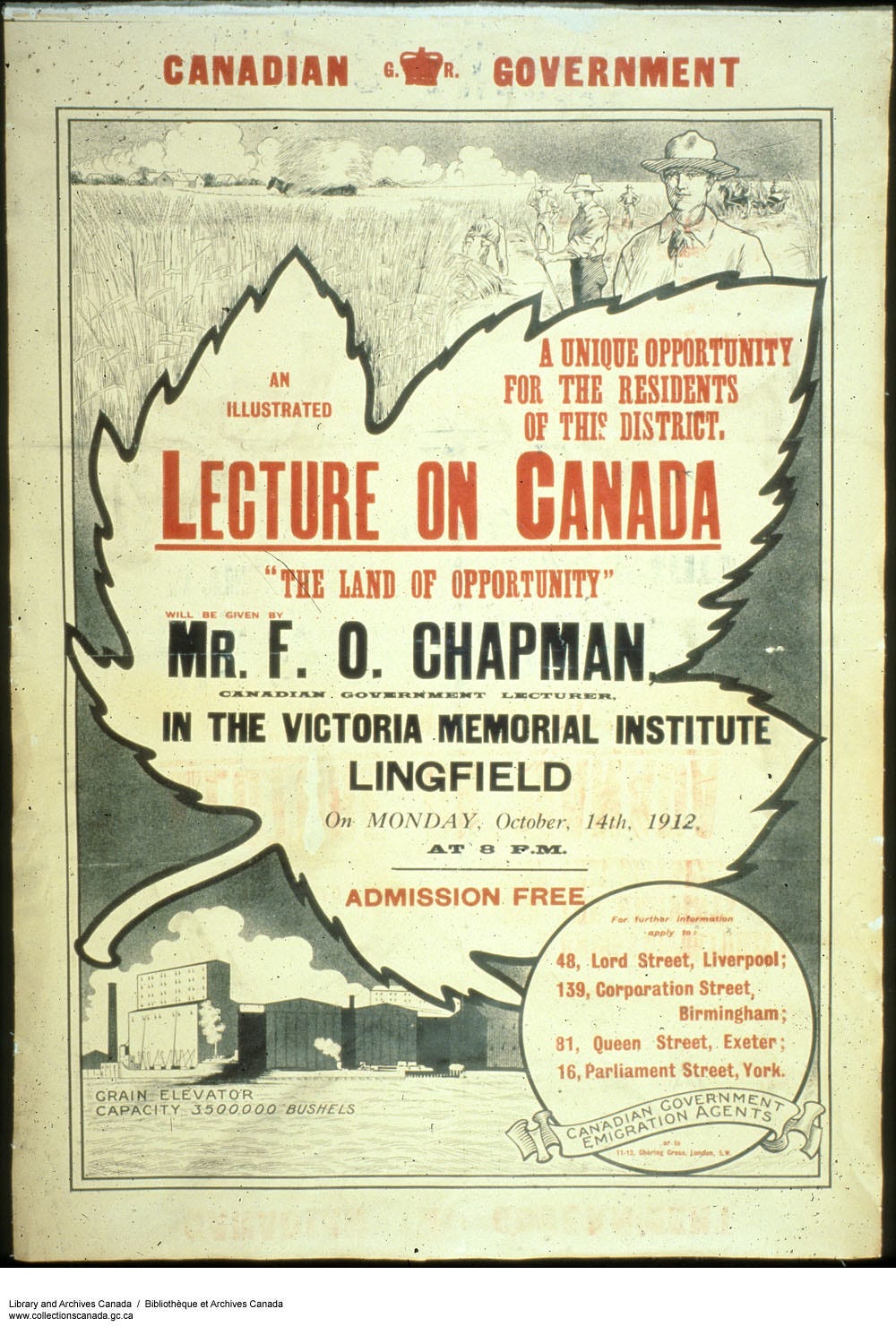
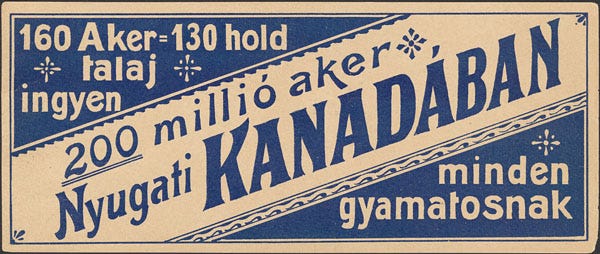


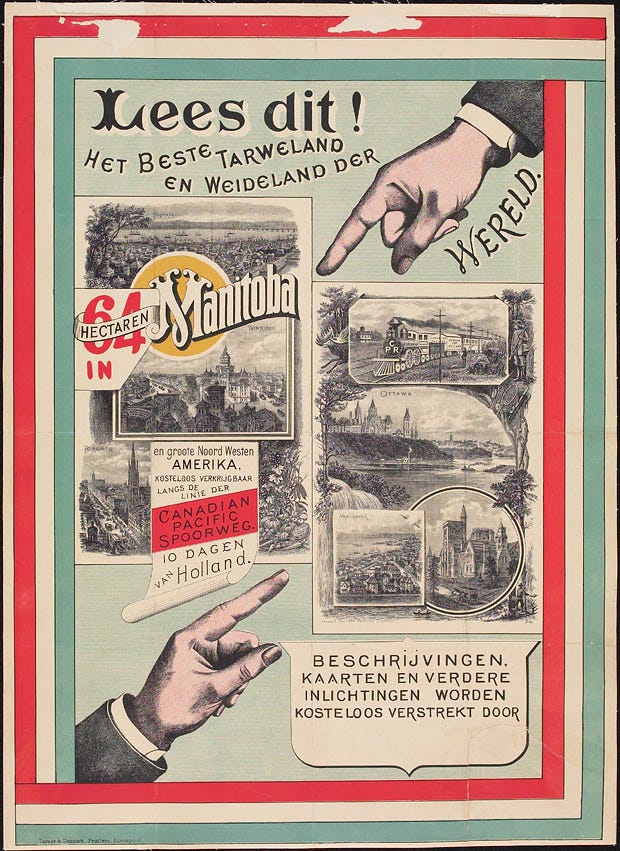


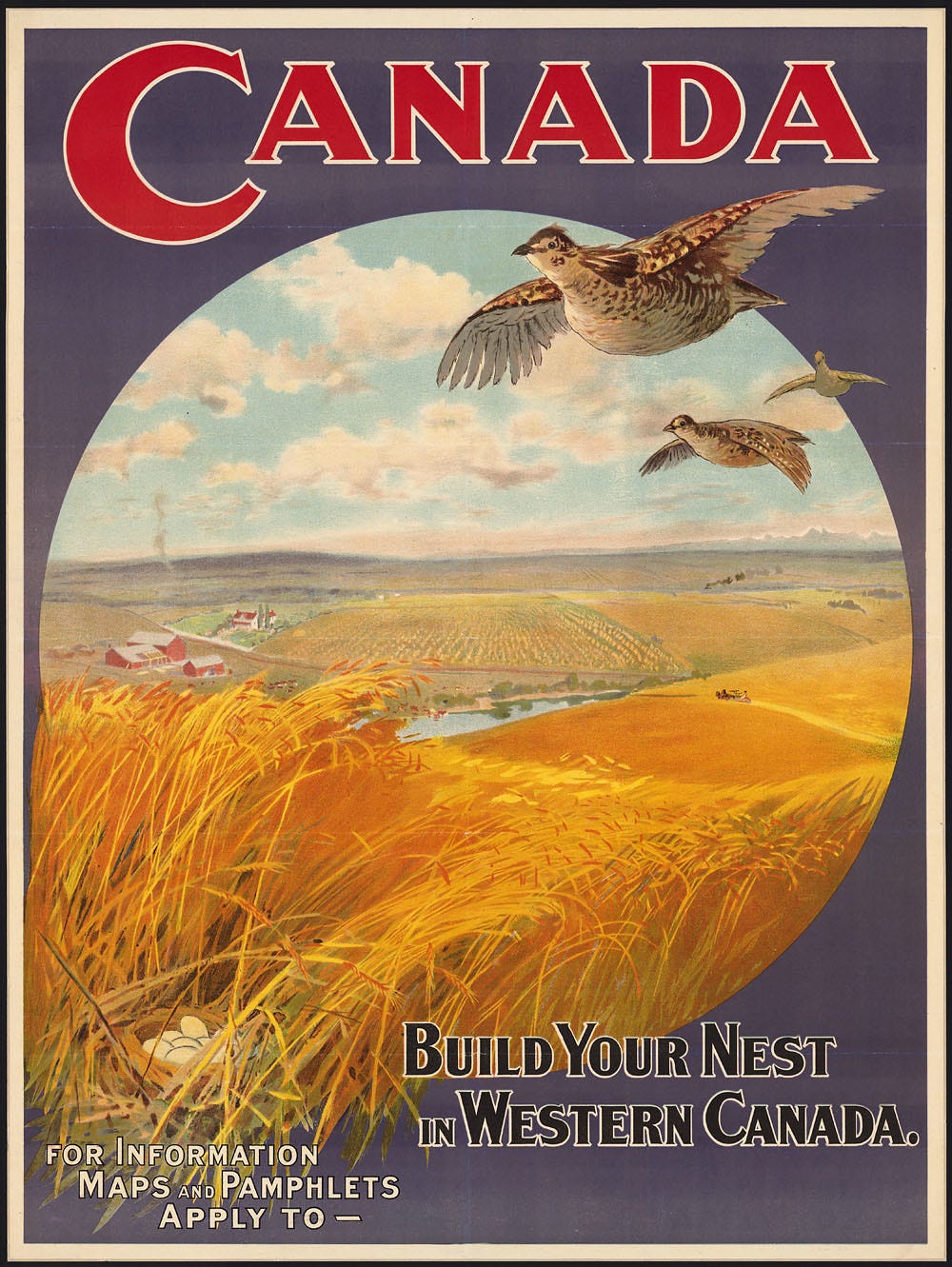
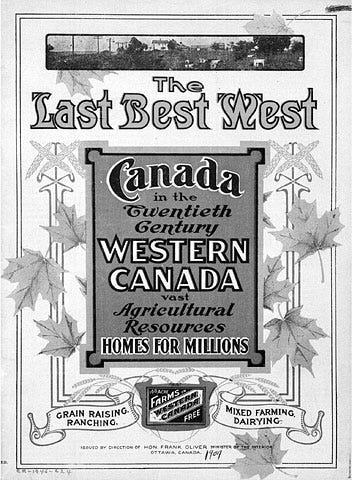



The Chinese Exclusion Acts in the U.S. were enacted after the transcontinental railroad was completed and became the foundation for the racist and woefully outdated current immigration laws. https://www.history.com/articles/chinese-exclusion-act-1882
Love this!